Obama ConnectED Initiative Aims To Get Classrooms Online
President Barack Obama imagines a country where teachers know what's happening in their students' brains.
He wants "teachers to have an ability to assess learning hour by hour and day by day," a senior White House official said Wednesday. "That vision ... is really not possible with the connectivity we have today."
That's why on Thursday Obama will speak at a school in Mooresville, N.C., to unveil an initiative that adims to give 99 percent of America's public schools high-speed connectivity over the next five years.
The project, called ConnectED, also seeks to get devices into the hands of teachers and students so they can experience digital lessons and software designed for the classroom. Districts will be in control of their own purchasing. The plan would also use existing money within the Elementary and Secondary Education Act to
No Child Left Behind Debate, Student Loan Rancor Signal End Of Bipartisanship In Education
He wants "teachers to have an ability to assess learning hour by hour and day by day," a senior White House official said Wednesday. "That vision ... is really not possible with the connectivity we have today."
That's why on Thursday Obama will speak at a school in Mooresville, N.C., to unveil an initiative that adims to give 99 percent of America's public schools high-speed connectivity over the next five years.
The project, called ConnectED, also seeks to get devices into the hands of teachers and students so they can experience digital lessons and software designed for the classroom. Districts will be in control of their own purchasing. The plan would also use existing money within the Elementary and Secondary Education Act to
No Child Left Behind Debate, Student Loan Rancor Signal End Of Bipartisanship In Education
Once upon a time, education was a bipartisan issue, even in Washington.
When it came to America's schools -- a point of bombastic rhetoric on the campaign trail -- Democrats and Republicans have historically been willing to set aside their differences and hug it out. The 2001 No Child Left Behind Act, a law that dramatically increased the federal government's reach into America's schools, illustrated this situation: Republicans, like President George W. Bush, Rep. John Boehner (Ohio) and Sen. Judd Gregg (N.H.), and Democrats, like Rep. George Miller (Calif.) and Sen. Ted Kennedy (Mass.), were equally enthusiastic cosponsors.
Over the last few years, even when signs of partisan rancor interfered, education held onto its unique status as an across-the-aisle, hand-shaking issue. Its position was bolstered especially as more and more Democratic
When it came to America's schools -- a point of bombastic rhetoric on the campaign trail -- Democrats and Republicans have historically been willing to set aside their differences and hug it out. The 2001 No Child Left Behind Act, a law that dramatically increased the federal government's reach into America's schools, illustrated this situation: Republicans, like President George W. Bush, Rep. John Boehner (Ohio) and Sen. Judd Gregg (N.H.), and Democrats, like Rep. George Miller (Calif.) and Sen. Ted Kennedy (Mass.), were equally enthusiastic cosponsors.
Over the last few years, even when signs of partisan rancor interfered, education held onto its unique status as an across-the-aisle, hand-shaking issue. Its position was bolstered especially as more and more Democratic

